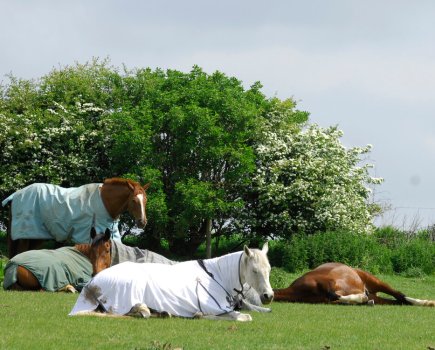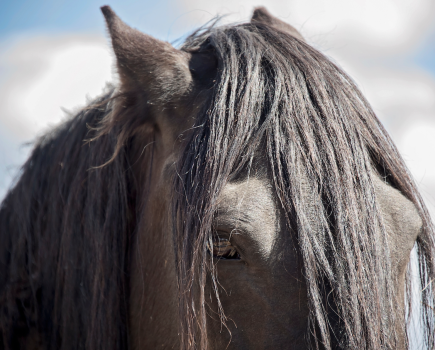Injuries caused by headcollars are more common than you might think — and they don’t occur only in horses, but in their handlers too.
In a 2019 study carried out by Dr David Marlin and Equilibrium Products, of the 5,615 survey responses, one in seven people said they had been injured, and one in three horses were hurt. Tragically, 167 horses were reported to have lost their lives as a result of an incident involving a headcollar.
“When you consider the research that goes into saddles and bridles, it is quite surprising that there was no scientific research into headcollars,” says Laura, Equilibrium’s sales director. “And so we worked with Dr David on an independent project around headcollar and headcollar safety, and carried out the research to see what we could find out.”
In the study, the types of accidents reported ranged from small cuts, bruising and abrasions, all the way up the scale to fractures and fatalities. It also looked at where accidents happen.
“Often when we think about a headcollar and safety we associate it with a field. Actually the accidents were quite varied,” adds Laura. “The most significant place where an accident happens is while the horse is tied up outside. In the field follows, and then it’s when horses are tied up in the stable, in the lorry and being led.
“So it’s really important, and I really want to stress this, that when you think about safety and headcollars, it’s not just when that horse is in the field. It’s when you’re doing anything with them.”
For such a vital piece of kit that is used multiple times a day, every day, for myriad reasons, it’s easy to overlook a headcollar’s role in keeping you and your horse safe – but that needs to change.
“Horses don’t necessarily go out to get themselves into mischief. They are generally just looking for a quiet, easy life and something happens, something scares them – they don’t even need to be a spooky horse – and then they find themselves pulling back,” says Laura Szuca. “Prevention is better than cure. It’s too late when an accident has happened. It could save their life.”
Finding a breaking point
As part of his research, Dr David Marlin constructed a rig and set about systematically testing a wide range of headcollars. Each one was tested six times, and the point at which they broke was recorded. Breaking points varied massively – up to an enormous 600kg.
“To put it into context, 600kg is an average 16hh horse suspended in the air and that headcollar still hasn’t broken,” points out Equilibrium’s Laura Szuca. “That is why horses are being injured. At the bottom end, they’re potentially breaking too low.”
The study found that webbing and nylon could withstand more force than any other material. Leather performed better, taking between 210kg and 220kg of force before breaking, but Laura argued that this is still too high.
“One thing that made me feel uncomfortable as a horse owner was the foal slip, which took 120kgs of force to break. If you think how small a foal is, 120kg of force is a huge amount for that foal to be able to put down on that headcollar before it breaks,” she adds.
The researchers concluded that horses were being injured and headcollars were breaking at too high a breaking point. But there also needs to be a balance, because a headcollar breaking at too low a pressure will lead to a lot of unnecessarily loose horses.
“You have to find that balance, and that was done through a series of testing and field trials to work out how we come up with that magic number,” explains Laura.
It led to the development of Equilibrium’s Stellar Safety Headcollar, which has a release mechanism of press stud fasteners on the side and releases at 83kg.









